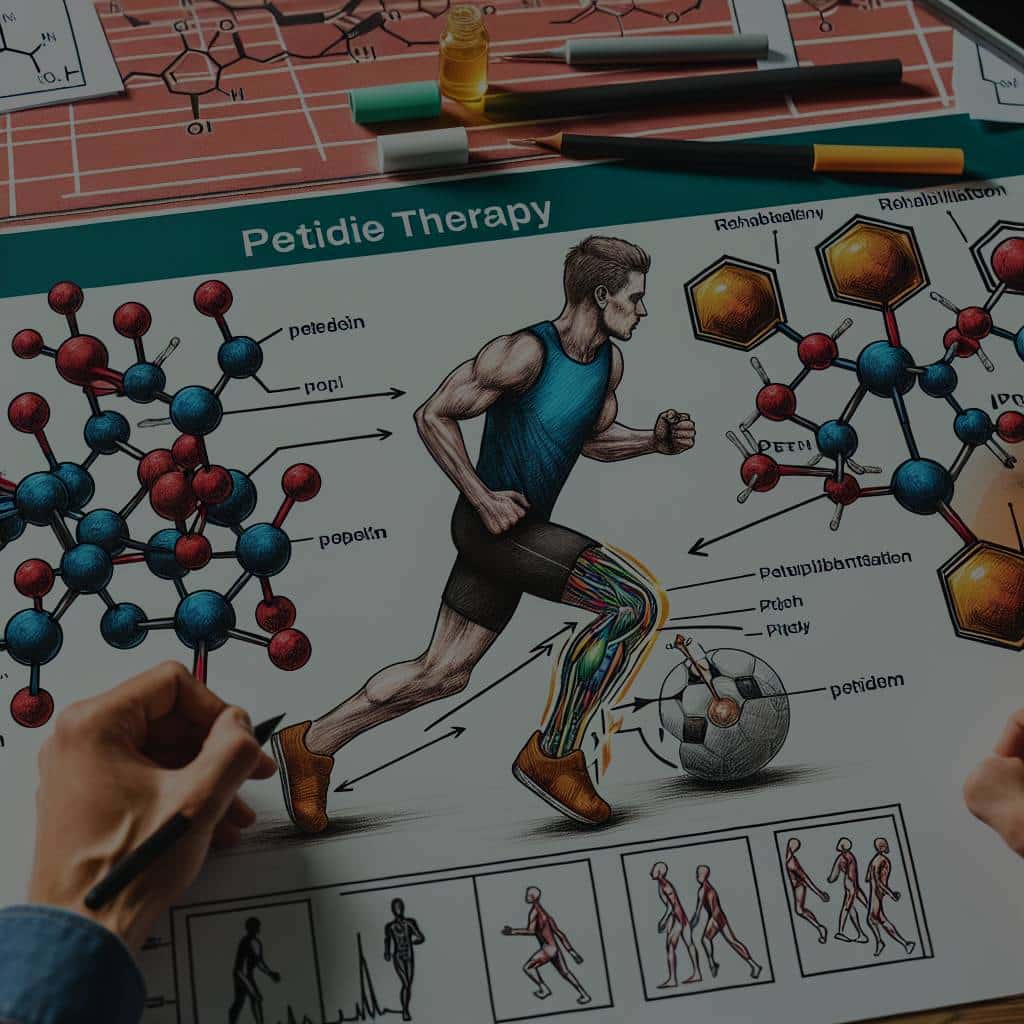What Is the Efficacy of Peptide Therapy in Sports Injury Rehabilitation?

As sports enthusiasts, we can appreciate the sheer determination and grit it takes for athletes to push their physical boundaries constantly. In this quest for excellence, injuries are often an unwanted side-product. From minor strains to major muscle tears, sports injuries can take a significant toll on an athlete’s performance and recovery time.
In recent years, peptide therapy has emerged as a potential game-changer in sports injury rehabilitation. But what exactly is peptide therapy, and how effective is it in healing injuries and improving performance? This article explores the science underlying peptide therapy, its implications for sports injury recovery, and the current state of research on this promising therapeutic approach.
Also read : The important role of consultants in biopharmaceutical development
Understanding Peptides and Their Role in the Body
Before we delve into the specifics of peptide therapy, it’s crucial to understand what peptides are and their role in our bodies. Peptides are small proteins composed of short chains of amino acids. They play a variety of roles in the body, including acting as hormones, neurotransmitters, and growth factors.
One important function of peptides is their role in tissue repair and growth. Certain types of peptides, such as collagen peptides, are essential for maintaining the health and integrity of our tissues, including muscles, skin, and connective tissues. This property makes them particularly interesting in the context of sports injury rehabilitation.
Topic to read : What Are the Health Outcomes of Implementing Dynamic Standing Desks in Office Environments?
Peptide Therapy: A New Approach to Sports Injury Rehabilitation
Peptide therapy involves the use of specific peptides to stimulate various biological processes that promote healing and recovery. These peptides can be administered through injections or oral supplements, depending on the specific needs of the patient.
In the context of sports injury rehabilitation, peptide therapy aims to accelerate tissue repair, reduce inflammation and pain, and enhance muscle growth and performance. For example, BPC-157, a peptide derived from a protein found in the stomach, has been shown in preclinical studies to accelerate the healing of various tissues, including muscle, tendon, and nerve tissues.
The Evidence: What Do the Studies Say?
The use of peptide therapy in sports injury rehabilitation is a relatively new field of research. However, initial studies and clinical trials have yielded promising results.
A growing body of evidence, largely from animal studies and a few human trials, suggests that certain peptides can accelerate tissue repair and reduce inflammation. For instance, a study published on PubMed demonstrated that BPC-157 significantly improved the healing of tendon-to-bone injuries in rats.
Moreover, research on collagen peptides, published on Crossref, has shown positive effects on muscle recovery and performance. For example, a randomized controlled trial found that supplementation with collagen peptides improved muscle strength and body composition in elderly men.
Current Challenges and Future Perspectives
Despite the promising evidence, there are still many challenges in the field of peptide therapy for sports injury rehabilitation. One of the main challenges is the lack of large-scale, high-quality clinical trials. Most studies to date have been preclinical or small-scale human studies, and their results need to be confirmed by larger trials.
Additionally, the safety and long-term effects of peptide therapy are not fully understood. Some peptides, such as those involved in growth and repair, could potentially have unwanted side-effects, such as promoting the growth of cancer cells.
On a positive note, advances in peptide science and technology are paving the way for the development of more effective and safer peptide therapies. Emerging technologies, such as peptide engineering and drug delivery systems, promise to enhance the therapeutic potential of peptides and reduce their potential side effects.
In conclusion, while peptide therapy holds great promise for sports injury rehabilitation, more research is needed to fully establish its efficacy and safety. As always, athletes and sports enthusiasts should consult with a healthcare professional before starting any new therapy or supplement regimen.
The Role of Peptide Therapy in Muscle Growth and Collagen Synthesis
Peptide therapy is gaining increasing attention in the field of sports medicine, particularly for its potential in stimulating muscle growth and collagen synthesis. These processes are paramount to robust recovery following sports-related injuries, thereby returning athletes to their optimal performance levels.
In the realm of muscle growth, specific peptides such as follistatin are emerging as potential game-changers. Follistatin is a peptide that naturally occurs in the body and is essential for muscle growth and development. Research published in PubMed Google indicates that administering follistatin peptides can significantly enhance muscle growth and strength. In practice, this could translate to faster recovery from muscle damage incurred during intense physical activity or sports.
Similarly, peptide therapy may play a crucial role in collagen synthesis – a process vital to tissue repair. Collagen, a primary structural protein in the body, is crucial for the health and resilience of various tissues, including skin, tendons, ligaments, and muscles. In the context of sports injuries, effective collagen synthesis can mean faster healing times and improved tissue strength. Some studies, such as those available on Crossref Google, suggest that supplementation with specific peptides can boost collagen production in the body.
However, it’s essential to note that while these findings present a promising outlook for peptide therapy in sports injury rehabilitation, more research is needed. Many studies are still in the preliminary or experimental stages and are often conducted on animal models. Therefore, the exact effects and potential side effects of peptide therapy on human muscle growth and collagen synthesis require further exploration.
Conclusion: The Potential and Challenges of Peptide Therapy in Sports Injury Rehabilitation
In the continuously evolving field of sports medicine, peptide therapy emerges as a promising avenue for facilitating more effective and efficient recovery from sports-related injuries. By potentially enhancing muscle growth, stimulating collagen synthesis, and accelerating tissue repair, peptide therapy could revolutionize the approach to sports injury rehabilitation and performance enhancement.
However, like any emerging therapy, peptide therapy is not without its challenges. The lack of large-scale, high-quality clinical trials is a significant hindrance in fully establishing the efficacy and safety of this approach. Furthermore, the potential long-term side effects of peptide therapy, including the risk of unwanted growth promotion, are yet to be fully understood.
Given these considerations, it is vital for athletes and individuals engaged in intense physical activity to consult with healthcare professionals before beginning peptide therapy or any new supplement regimen. Continued research and technological advancements in peptide science may soon provide more definitive answers regarding the benefits and risks associated with peptide therapy.
As of today, 06/03/2024, the future of peptide therapy in sports injury rehabilitation looks promising, but it is imperative to continue the pursuit of knowledge through rigorous research protocols for its safe and effective application.
